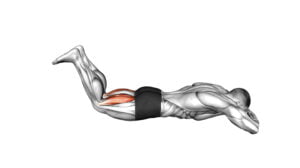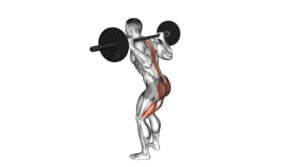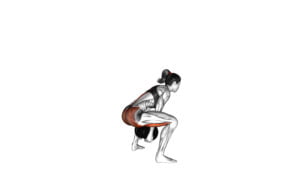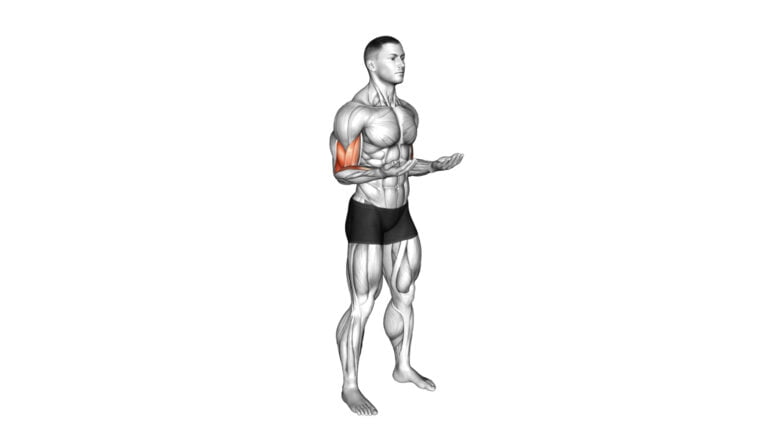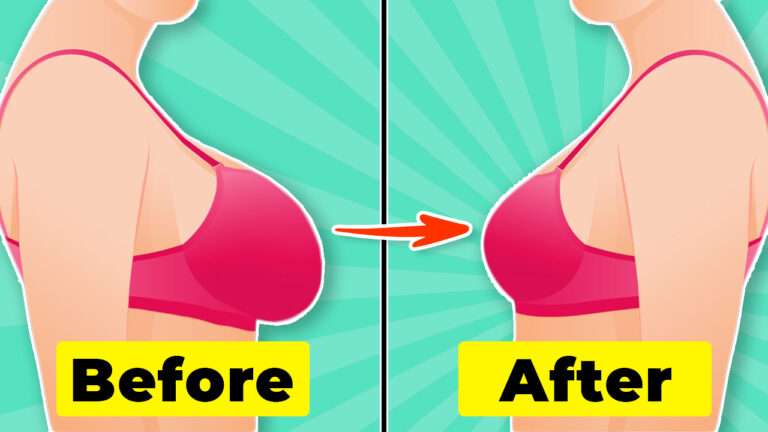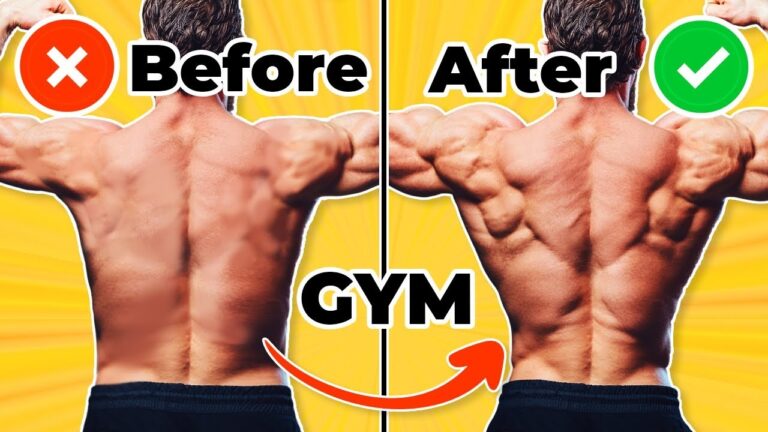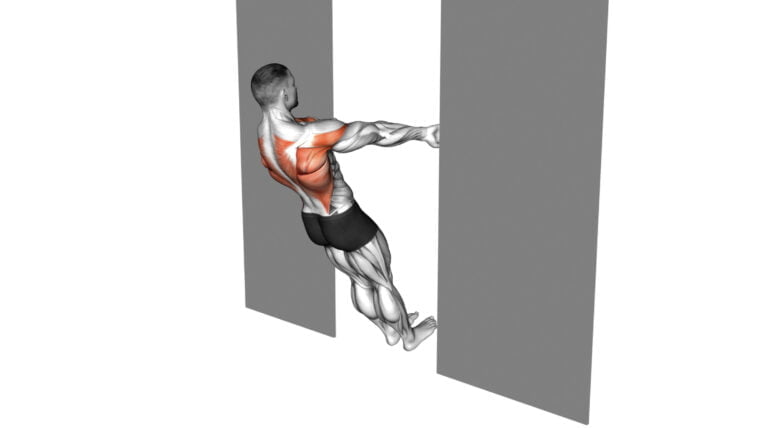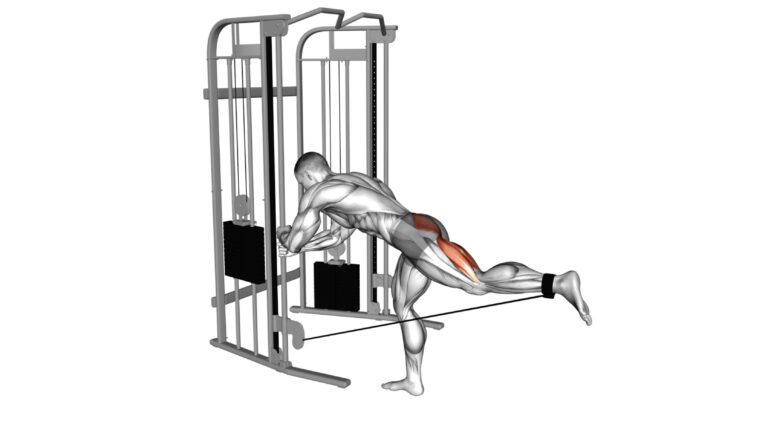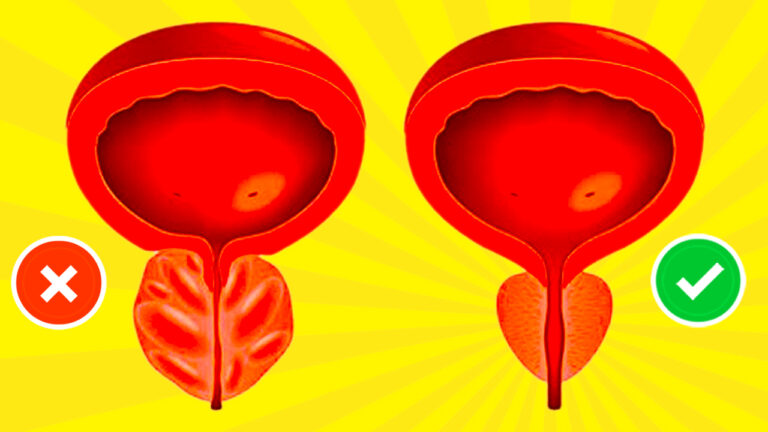10 Lower Body Pull Exercises To Strengthen Your Hamstrings And Glutes

Unlock the power of your lower half with targeted lower body pull exercises that fortify your hamstrings and glutes, pivotal muscles often overshadowed by their showier counterparts in the quadriceps.
As a seasoned strength and conditioning coach with years of guiding athletes to peak performance, I’ve seen firsthand how strengthening these posterior chain powerhouses can utterly transform one’s physical capabilities.
By hinging, pulling, and lifting through these ten meticulously selected movements, you will tap into the potent synergy of hamstrings and glutes. This unique blend not only enhances stability and propels athletic prowess but also plays a critical role in preventing lower back pain—a benefit most are unaware of until they feel the remarkable difference.
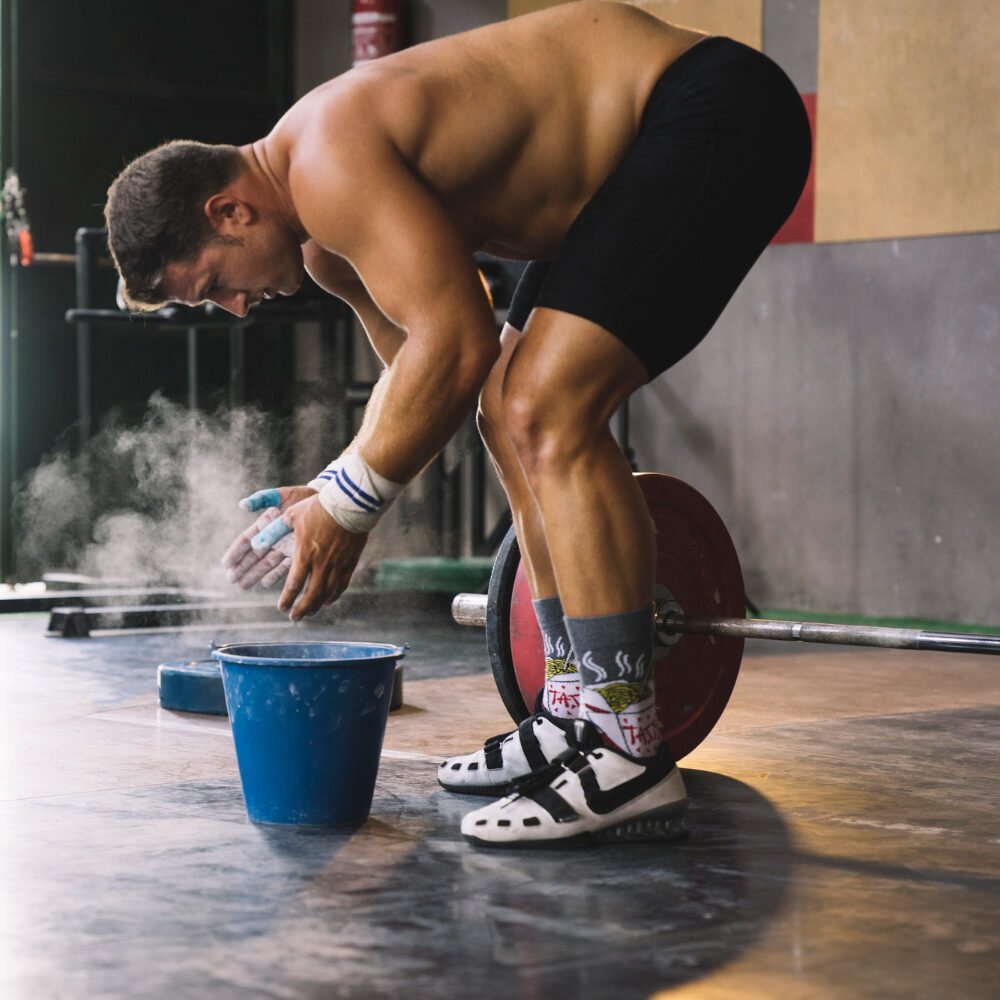
Dive into this treasure trove of knowledge designed to elevate your workouts; it’s time to experience real gains!
Key Takeaways
- Strengthening your hamstrings and glutes through lower body pull exercises can lead to better stability, improved athletic performance, and reduced injury risk.
- Incorporating a variety of exercises like cable pull throughs, stiff leg deadlifts, good mornings, and Romanian deadlifts ensures comprehensive engagement of the posterior chain muscles.
- Prioritizing proper form and technique in every exercise is essential for maximizing benefits while minimizing the chance of injury.
- Progressive overload by gradually increasing weight or resistance is key to continued muscle growth and strength gains over time.
- Equally important in any workout plan are rest periods and recovery time to allow muscles to repair themselves for more effective training sessions.
Understanding Lower Body Pull Exercises
Lower body pull exercises target the hamstrings, glutes, and lower back muscles. These exercises involve movements that require pulling resistance towards the body, helping to strengthen and tone these muscle groups.
Muscles Worked
Lower body pull exercises target some of the most powerful muscles in your body. At the heart of these movements are your hamstrings and glutes, which are essential for hip extension and knee flexion.
These workouts also engage your hips, lower legs, and even your core muscles to create a stable foundation for lifting.
Pulling exercises don’t just stop there; they activate a symphony of muscle groups beyond the obvious. Your back and spinal erectors align to keep you upright while adductors work alongside gluteal muscles for comprehensive lower-body strength.
Embrace these compound exercises that involve various joints like hips, knees, and ankles – building not only muscle but also improving biomechanics and flexibility across multiple areas.

Benefits
Building on the muscle groups targeted, engaging in lower body pull exercises brings a wide array of advantages. Strengthening your hamstrings and glutes can lead to improved stability and support for daily activities like walking, running, or climbing stairs.
This type of training boosts hip extensor strength, critical for explosive moves and can enhance overall athletic performance. The movements involved also encourage better posture by aligning the spine and pelvis properly.
Regularly performing exercises such as romanian deadlifts or sumo squats not only builds muscle but also increases joint resilience. You’re likely to notice decreased risk of injury in both sports activities and normal life routines due to stronger ligaments around key joints like the knees and hips.
Furthermore, these exercises can drive hypertrophy in targeted muscles, leading to a more defined appearance that many fitness enthusiasts strive for. By consistently challenging these areas with free weights or kettlebells, you promote increased calorie burn which supports fat loss efforts alongside muscle growth.
10 Types of Lower Body Pull Exercises
Lower body pull exercises include cable pull through, stiff leg deadlifts (Smith Machine), bent knee good morning (Smith Machine), single leg deadlifts (Smith Machine), sumo deadlifts (Smith Machine), Romanian deadlifts (Landmine), axle deadlifts, deadlifts from blocks, good mornings (Barbell), and Romanian deadlifts (Barbell).
These exercises target the hamstrings and glutes to help strengthen and tone your lower body.
1. Cable Pull Through
The Cable Pull Through is a powerful exercise for targeting the glutes and hamstrings, crucial muscles for explosive movements and stable posture. Position yourself facing away from a cable machine with the rope attachment threaded between your legs; hinge at your hips to engage those powerhouse muscle groups fully.
Stand up, squeeze your glutes, and propel your hips forward. This movement pattern echoes the hip extensors’ function in exercises like conventional deadlifts but without overloading the spine.
Master this move by keeping a flat back and bracing your core throughout each repetition. Your arms should remain straight as they hold onto the cable rope, effectively turning this into an isolation exercise that hones in on lower body strength while sparing excess strain on other areas.
Execute smooth reps to build endurance in these key lower-body musculature without needing barbells or squat racks – making it ideal for anyone looking to bolster their lifting routine or simply add some variety into their workouts.
2. Stiff Leg Deadlifts (Smith Machine)
Transitioning from Cable Pull Throughs, Stiff Leg Deadlifts on the Smith Machine engage the hamstrings and glutes with a focus on hip hinge movement. Placing your feet under the bar, bend at the hips while keeping a slight bend in your knees to maintain tension in the hamstrings.
Hold onto the bar with an overhand grip and slowly lower it down towards your feet while keeping your back straight. Pause for a moment once you feel a stretch in your hamstrings, then return to standing by driving through your heels and engaging your glutes at the top.
This exercise targets both hamstring flexibility and strength, helping to improve overall lower body stability and power. When performed correctly, it can help reinforce proper hip hinge mechanics—crucial for various daily activities as well as athletic performance such as sprinting or jumping—and enhance posterior chain development.
3. Bent Knee Good Morning (Smith Machine)
Performing bent knee good mornings on the Smith machine is an effective way to target and strengthen your hamstrings, glutes, and lower back. Start by setting the bar at about hip level then stand facing away from the machine with your feet shoulder-width apart.
Place the barbell behind your neck while bending your knees slightly. Maintain a straight back as you hinge forward at the hips until you feel a stretch in your hamstrings, then return to the starting position using your glutes.
By engaging in regular bent knee good mornings using the Smith machine, you can enhance hip mobility and strengthen important posterior chain muscles for improved performance in various activities such as squats and deadlifts.
This exercise also aids in promoting better posture and reducing the risk of injury by strengthening key muscles that support proper spinal alignment.
4. Single Leg Deadlifts (Smith Machine)
Performing single leg deadlifts on the Smith Machine is an excellent way to target and strengthen your hamstrings, glutes, and core. This exercise also helps improve balance and stability due to the unilateral nature of the movement.
Begin by standing with one foot slightly in front of the other and grasp the barbell or handles of the Smith Machine. Keeping your back straight and core engaged, hinge at your hips while lowering the barbell toward the ground until your torso is parallel to the floor.
Then, return to a standing position by driving through your heel and engaging your glutes.
5. Sumo Deadlifts (Smith Machine)
Sumo deadlifts in the smith machine are an effective way to target the glutes, hamstrings, and lower back. Position yourself with a wide stance and your feet turned slightly outwards to engage these muscle groups effectively.
Gripping the barbell with an overhand grip outside your legs, push through your heels to lift the weight while keeping your chest up and maintaining a neutral spine.
This variation of deadlifts can help improve hip mobility and strengthen the posterior chain. By incorporating sumo deadlifts into your lower body pull routine, you can develop greater strength and power in your lower body while also enhancing stability in the hips and core muscles.
6. Romanian Deadlifts (Landmine)
Transitioning from Sumo Deadlifts (Smith Machine) to Romanian Deadlifts (Landmine), incorporating the landmine attachment in this exercise offers a unique angle for targeting the posterior chain.
Performing Romanian deadlifts with a landmine allows for increased stability and control, making it an excellent alternative for individuals who struggle with traditional barbell Romanian deadlift form.
The landmine setup reduces strain on the lower back due to its fixed range of motion, allowing for a more upright torso position throughout the movement. This variation effectively targets the hamstrings, glutes, and lower back muscles while minimizing stress on other parts of the body.
7. Axle Deadlifts
Transitioning from the unilateral focus of Romanian deadlifts to a more traditional bilateral stance, axle deadlifts offer a unique challenge. Using an unconventional thick-barbell design, this variation emphasizes grip strength and engages the muscles in your forearms and upper back as you lift the weight off the ground.
By incorporating axle deadlifts into your lower body pull routine, you can effectively target your glutes, hamstrings, and lower back while also reinforcing overall stability. This exercise promotes functional strength for lifting objects from the ground and enhances performance in activities requiring coordination between lower and upper body muscle groups.
Incorporating axle deadlifts into your workout regimen not only strengthens essential muscle groups but also improves grip strength and overall stability. These benefits contribute to better performance across various physical activities, making this exercise a valuable addition to any lower body pull routine.
8. Barbell Deadlifts from Blocks
Barbell Deadlifts from blocks are an effective variation of the traditional deadlift exercise. By performing this movement from a raised position, you can work on strengthening specific points in your lift, such as breaking the bar off the floor and improving lockout strength.
This variation also allows for a reduced range of motion, which can be beneficial for individuals with limited mobility or those recovering from lower back issues.
Performing deadlifts from blocks requires setting up a secure platform at knee height to place the barbell on. The lifter then approaches this setup with proper form and executes the lift by driving through the legs and engaging the posterior chain muscles to complete the movement.
9. Barbell Good Mornings
To perform Good Mornings with a barbell, start by standing with your feet about hip-width apart. Place the barbell on your upper back, ensuring that it rests comfortably across your trapezius muscles.
With a slight bend in your knees and maintaining a straight back, hinge from your hips while keeping the natural arch in your lower back. Lower until you feel a stretch in your hamstrings and then return to the starting position by extending through the hips.
Engaging in regular Good Mornings (Barbell) can help to strengthen not only the hamstrings but also the glutes and lower back muscles. Incorporating this exercise into your lower body pull workouts helps to improve overall stability and strength in these key muscle groups, contributing to enhanced performance in various functional movements like squats and deadlifts.
10. Barbell Romanian Deadlifts
After mastering the good mornings with a barbell, you can advance to Romanian deadlifts. This exercise targets the hamstrings and glutes, helps improve hip hinge mechanics, and enhances overall posterior chain strength.
To perform Romanian deadlifts with a barbell, stand with your feet shoulder-width apart, grab the bar with an overhand grip, slightly bending your knees. With your back straight, push your hips back as you lower the bar towards the floor while keeping it close to your body.
Once you feel a stretch in your hamstrings without rounding your back excessively, return to standing position by driving through your heels.
Tips for Effective Lower Body Pull Training
Focus on proper form and technique, incorporate progressive overload, balance push and pull exercises, use different variations, and prioritize rest and recovery to maximize your lower body pull exercises.
Ready to take your hamstring and glute strength to the next level? Keep reading for a sample workout plan using these 10 exercises!
Proper form and technique
Maintaining proper form and technique is crucial for lower body pull exercises. Focus on keeping your back straight, shoulders pulled back, and core engaged throughout the movement.
Ensure that your knees are tracking with your toes during each repetition to prevent unnecessary strain.
Engage the targeted muscles by initiating the movement from the hips while maintaining tension in the hamstrings and glutes. Control the descent of the weight and avoid rounding your back to minimize injury risk.
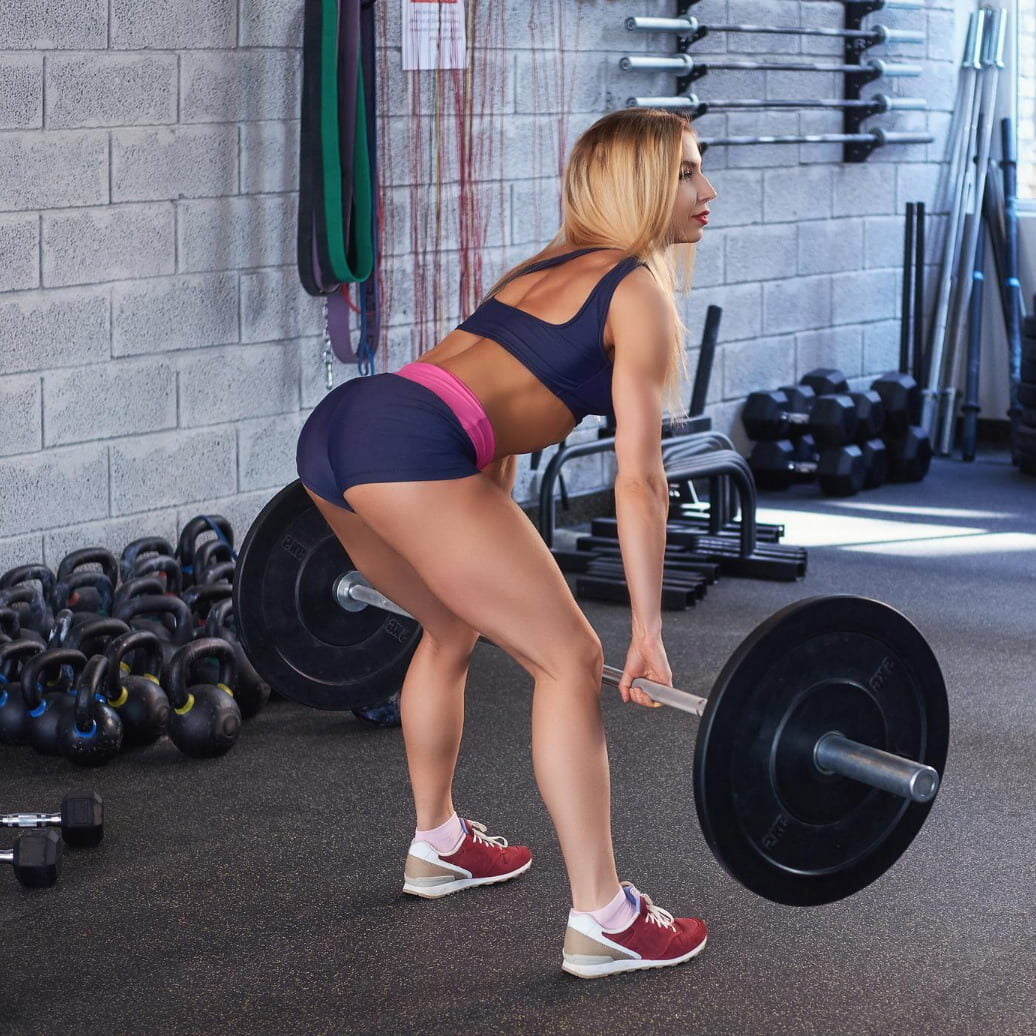
Progressive overload
To maximize the benefits of lower body pull exercises, it’s essential to incorporate progressive overload into your training regimen. This involves gradually increasing the resistance or intensity of your workouts over time, challenging your muscles to adapt and grow stronger.
By consistently adding weight, reps, or sets, you can ensure continued muscle development and improved performance.
Progressive overload stimulates muscle growth and strength gains by pushing your body beyond its current capacity. It prompts physiological adaptations that lead to increased muscle fiber recruitment and enhanced muscular endurance.
Balancing push and pull exercises
Transitioning from the goal of progressive overload, achieving a balanced workout routine should also prioritize push and pull exercises for optimal lower body development. Integrating movements that target both pushing and pulling actions not only promotes muscular symmetry but also reduces the risk of overuse injuries.
Incorporating an even distribution of lower body pull exercises alongside their push counterparts helps build strength across various muscle groups, ensuring comprehensive and well-rounded development.
Incorporating different variations
To maximize the effectiveness of your lower body pull workouts, incorporating different variations is crucial. This ensures that you target your hamstrings and glutes from various angles while preventing plateaus in your training.
Experimenting with exercises like cable pull throughs, stiff leg deadlifts, single leg deadlifts, and Romanian deadlifts using a barbell or landmine can add diversity to your routine.
Additionally, varying your foot positioning or grip style for exercises such as sumo deadlifts and axle deadlifts can provide unique stimulation to different muscle groups within your lower body.
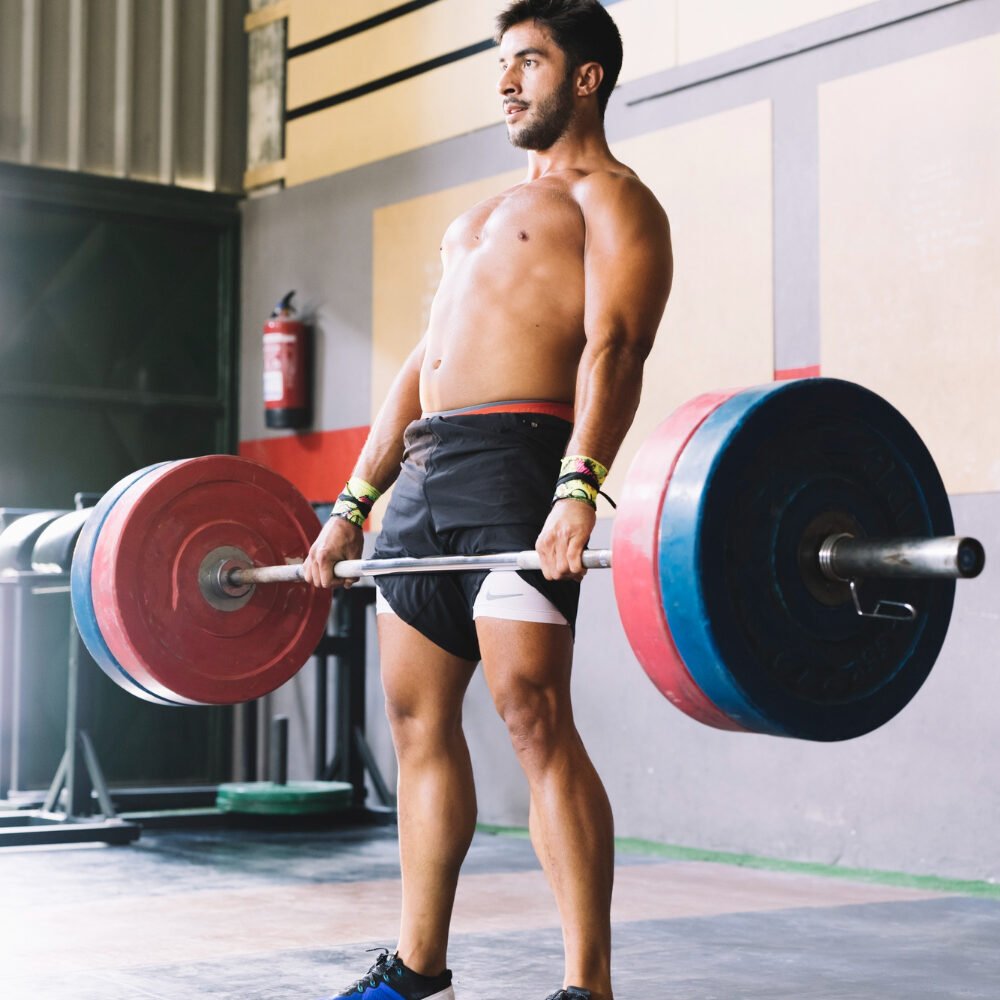
Rest and recovery
Rest and recovery are crucial components of any lower body pull workout plan. After intense training sessions, allowing your muscles time to rest is essential for optimal growth and repair.
Adequate rest periods between workouts help prevent overtraining and reduce the risk of injury, ensuring that your muscles have sufficient time to recover fully.
Incorporating rest days into your training schedule allows your body to replenish energy stores, repair muscle tissue, and adapt to the stress placed on it during exercises. Remembering to hydrate well, get enough sleep, and practice proper nutrition can also contribute significantly to efficient recovery.
Sample Lower Body Pull Workout Plan
Incorporate the 10 listed lower body pull exercises into a comprehensive workout plan that includes beginner and advanced options, rep and set ranges, rest periods, proper warm-up and cool-down, as well as tracking progress and making adjustments.
Ready to take your lower body strength to the next level? Check out the complete blog for more details on creating an effective workout plan tailored to your fitness goals.
Using the 10 listed exercises
Incorporate the 10 listed exercises into your lower body pull workout to target and strengthen your hamstrings and glutes effectively. Start with cable pull throughs to engage your posterior chain, followed by stiff leg deadlifts on the Smith machine for a focused hamstring workout.
Incorporate bent knee good mornings to further activate your glutes and hams, then challenge balance and stability with single leg deadlifts. Move on to sumo deadlifts for added hip activation before incorporating Romanian deadlifts using the landmine attachment or barbell, targeting both hamstrings and glutes.
Next, integrate axle deadlifts into your routine to promote grip strength while performing a compound lower body movement. Progress by adding in deadlifts from blocks, focusing on power development through an increased range of motion.
Beginner and advanced options
For beginners, start with bodyweight or light resistance variations of these exercises to focus on proper form and technique. Gradually increase the weight as you gain strength and confidence.
Incorporate single-leg variations such as single-leg deadlifts and bulgarian split squats to enhance stability and balance. Advanced individuals can add explosive exercises like sumo deadlifts or Romanian deadlifts with eccentric-overload techniques for greater challenge and muscle stimulation.
To progress further, consider incorporating different equipment options such as barbells, Smith machines, landmines, or axle bars to keep your training varied and challenging. Focus on progressive overload, aiming to increase weight lifted over time while maintaining good form.
Rep and set ranges
Determine the appropriate weight to use and aim for 3-5 sets of 6-12 reps for each exercise. Increase the weight gradually as you become stronger. Take sufficient rest between sets, aiming for about 1-2 minutes per set to allow your muscles to recover.
Additionally, consider adjusting the rep and set ranges based on your specific training goals and abilities.
Now let’s delve into how you can effectively structure a lower body pull workout plan using these exercises.
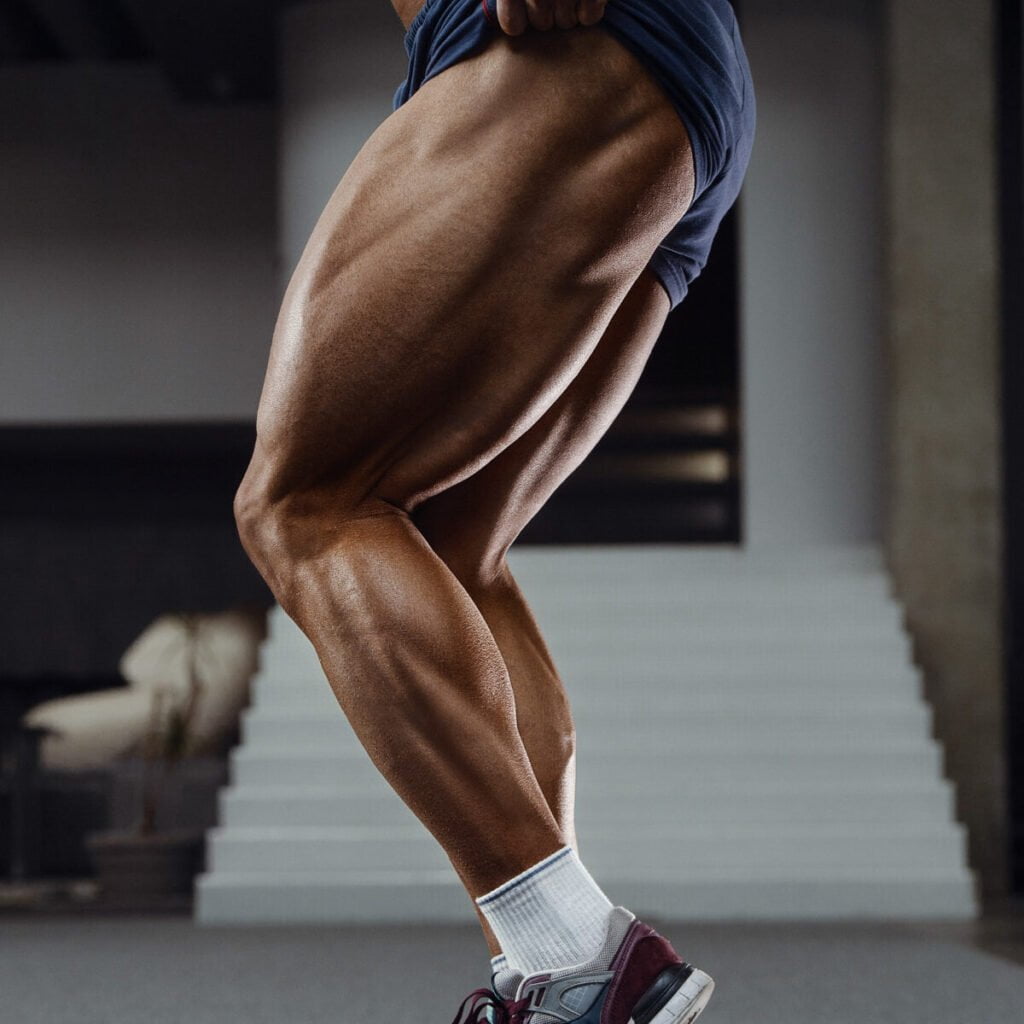
Rest periods
During lower body pull workouts, it’s crucial to incorporate adequate rest periods between sets. Properly timed rest allows your muscles to recover and regain the energy needed for the next set.
For heavy compound movements like deadlifts or cable pull throughs, aim for rest periods of 2-3 minutes to ensure optimal recovery before tackling the next set with full intensity.
On the other hand, when performing isolation exercises such as stiff leg deadlifts or good mornings, shorter rest periods of 1-2 minutes can suffice as these exercises target specific muscle groups and don’t exert as much systemic fatigue.
Proper warm-up and cool-down
To prepare your muscles for the lower body pull workout, start with a dynamic warm-up that includes movements like leg swings, hip circles, and squats. This helps to increase blood flow and flexibility in the hamstrings and glutes.
After completing the workout, cool down with static stretches such as hamstring stretches and seated glute stretches to reduce muscle tension and promote recovery.
While preparing for the lower body pull exercises, it is crucial to activate the targeted muscles through a comprehensive warm-up routine. Equally important is providing adequate relaxation post-workout through a thorough cool-down session focused on stretching the worked muscles.
Tracking progress and making adjustments.
To assess progress, keep a workout log to track the weights, reps, and sets for each exercise. Regularly checking this log will help you identify areas where improvement is needed and make appropriate adjustments to your training program.
Consider increasing weight incrementally or adding an extra set or rep when exercises become easier, ensuring steady progression over time.
As you continue your lower body pull training, pay attention to any signs of fatigue, soreness, or lack of progress in certain exercises. Based on these observations, adjust rest periods and recovery days as necessary.
Conclusion
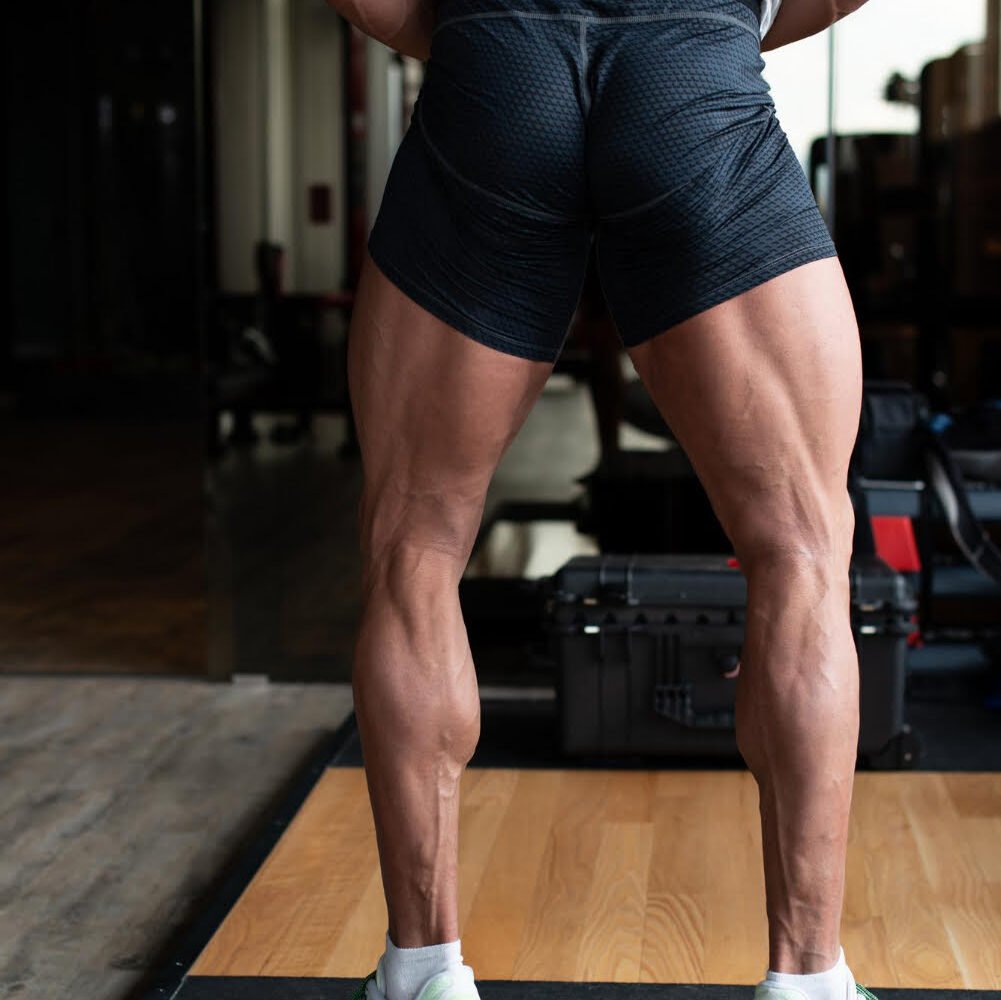
In conclusion, incorporating these lower body pull exercises into your workout routine can significantly strengthen your hamstrings and glutes. By following the tips provided, such as proper form and progressive overload, you can ensure an effective and efficient training regimen.
Are you ready to take on the challenge of implementing these strategies for a stronger lower body? Embracing these exercises holds the potential to bring about noteworthy improvements in muscle strength and overall athletic performance.
Keep pushing yourself towards achieving your fitness goals with determination and consistency!
FAQs
1. What’s the benefit of focusing on lower body pull exercises?
Lower body pull exercises target your hamstrings and glutes, crucial for hip joint strength, stability, and overall lower body power.
2. Can squats help improve my hamstring and glute muscles?
Absolutely! Back squat variations like barbell squats and hack squats engage your thighs’ posterior muscles, effectively strengthening your hamstrings and glutes.
3. Which exercise is good for activating my gluteus minimus?
Lateral leg raises involve abduction movements that specifically activate the smaller muscle groups such as the gluteus minimus in your buttocks.
4. Are there any benefits to doing exercises like chin-ups for my lower body?
While chin-ups primarily work upper-body muscles like lats and biceps through elbow joint flexing, they can also engage your core and promote total-body functional strength.
5. How does proper equipment like lifting belts support lower body workouts?
Using a lifting belt during heavy lifts can stabilize your core, which allows you to squat with better form while targeting those key backside muscles safely.
6. Do hyperextensions focus more on hamstrings or glutes?
Hyperextensions are great for both; they concentrate on stretching and contracting the posterior chain muscles including the hamstrings, glutes, as well as engaging the latissimus dorsi in the back.

Author
Years ago, the spark of my life’s passion ignited in my mind the moment I stepped into the local gym for the first time. The inaugural bead of perspiration, the initial endeavor, the very first surge of endorphins, and a sense of pride that washed over me post-workout marked the beginning of my deep-seated interest in strength sports, fitness, and sports nutrition. This very curiosity blossomed rapidly into a profound fascination, propelling me to earn a Master’s degree in Physical Education from the Academy of Physical Education in Krakow, followed by a Sports Manager diploma from the Jagiellonian University. My journey of growth led me to gain more specialized qualifications, such as being a certified personal trainer with a focus on sports dietetics, a lifeguard, and an instructor for wellness and corrective gymnastics. Theoretical knowledge paired seamlessly with practical experience, reinforcing my belief that the transformation of individuals under my guidance was also a reflection of my personal growth. This belief holds true even today. Each day, I strive to push the boundaries and explore new realms. These realms gently elevate me to greater heights. The unique combination of passion for my field and the continuous quest for growth fuels my drive to break new ground.





